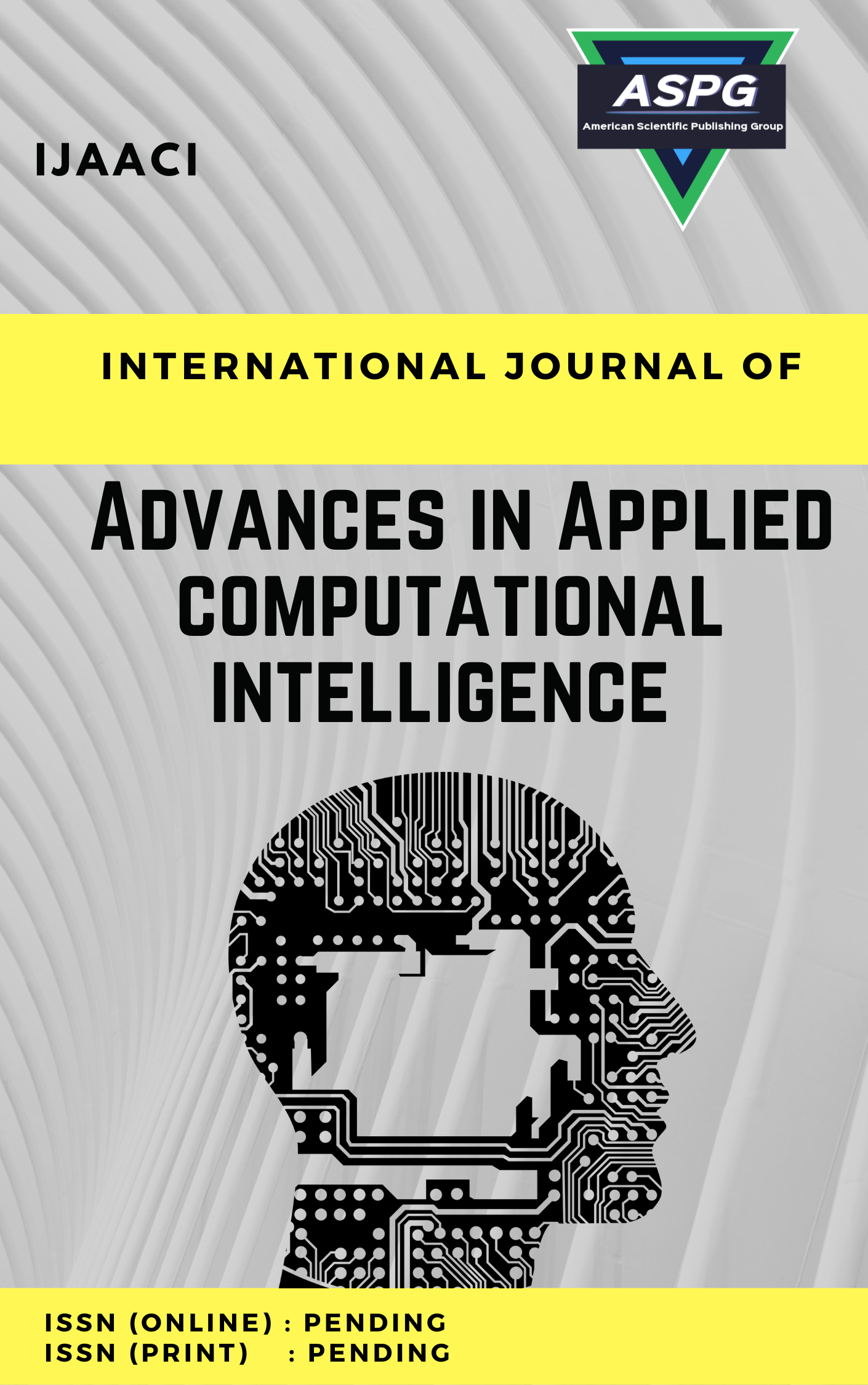

Volume 3 , Issue 1 , PP: 41-52, 2023 | Cite this article as | XML | Html | PDF | Full Length Article
Ahmed Abdelhafeez 1 * , Myvizhi M. 2
Doi: https://doi.org/10.54216/IJAACI.030104
This study investigates the feasibility of using wearable technologies in education to improve safety. This article explores how wearables may be used to improve school safety and wellness, as well as their advantages, disadvantages, and future potential. The article covers a wide range of wearable gadgets and their respective safety-related features, from smartwatches to location trackers to panic buttons and biometric sensors. Privacy issues, data security, user acceptability, and ethical considerations are only some of the problems and hazards discussed in this research on wearables in education. This study the neutrosophic set to deal with uncertain data. The neutrosophic set is integrated with the multi-criteria decision-making (MCDM) CRITIC method. The CRITIC method is used to compute the weights of factors and rank it. There are 15 factors used in this study. The case study is applied in the education field. Educators, technologists, and legislators all need to work together to guarantee the safe and effective use of wearable devices in schools, as shown by the study's findings. The article reiterates the importance of wearables and their potential to enhance safety measures in education before making the case for more studies, pilot programmers, and policy development to fully realize their promise.
Wearable Technological Devices , MCDM , Neutrosophic Set , Safety and Security
[1] K. P. L. Chong, J. Z. Guo, X. Deng, and B. K. P. Woo, “Consumer perceptions of wearable technology devices: retrospective review and analysis,” JMIR mHealth uHealth, vol. 8, no. 4, p. e17544, 2020.
[2] M. H. Iqbal, A. Aydin, O. Brunckhorst, P. Dasgupta, and K. Ahmed, “A review of wearable technology in medicine,” J. R. Soc. Med., vol. 109, no. 10, pp. 372–380, 2016.
[3] K. W. Ching and M. M. Singh, “Wearable technology devices security and privacy vulnerability analysis,” Int. J. Netw. Secur. Its Appl., vol. 8, no. 3, pp. 19–30, 2016.
[4] J. A. Bunn, J. W. Navalta, C. J. Fountaine, and J. D. Reece, “Current state of commercial wearable technology in physical activity monitoring 2015–2017,” Int. J. Exerc. Sci., vol. 11, no. 7, p. 503, 2018.
[5] K. Sergueeva, N. Shaw, and S. H. Lee, “Understanding the barriers and factors associated with consumer adoption of wearable technology devices in managing personal health,” Can. J. Adm. Sci. Can. des Sci. l’Administration, vol. 37, no. 1, pp. 45–60, 2020.
[6] W. Huifeng, S. N. Kadry, and E. D. Raj, “Continuous health monitoring of sportsperson using IoT devices based wearable technology,” Comput. Commun., vol. 160, pp. 588–595, 2020.
[7] J. Greiwe and S. M. Nyenhuis, “Wearable technology and how this can be implemented into clinical practice,” Curr. Allergy Asthma Rep., vol. 20, pp. 1–10, 2020.
[8] A. C. Borthwick, C. L. Anderson, E. S. Finsness, and T. S. Foulger, “Special article personal wearable technologies in education: Value or villain?,” J. Digit. Learn. Teach. Educ., vol. 31, no. 3, pp. 85–92, 2015.
[9] C. S. Miner, D. M. Chan, and C. Campbell, “Digital jewelry: wearable technology for everyday life,” in CHI’01 extended abstracts on Human factors in computing systems, 2001, pp. 45–46.
[10] J. W. Navalta, J. Montes, N. G. Bodell, R. W. Salatto, J. W. Manning, and M. DeBeliso, “Concurrent heart rate validity of wearable technology devices during trail running,” PLoS One, vol. 15, no. 8, p. e0238569, 2020.
[11] P. Rani, A. R. Mishra, R. Krishankumar, K. S. Ravichandran, and S. Kar, “Multi-criteria food waste treatment method selection using single-valued neutrosophic-CRITIC-MULTIMOORA framework,” Appl. Soft Comput., vol. 111, p. 107657, 2021.
[12] A. Abdel-Monem, N. A. Nabeeh, and M. Abouhawwash, “An Integrated Neutrosophic Regional Management Ranking Method for Agricultural Water Management,” Neutrosophic Systems with Applications, vol. 1, pp. 22–28, 2023.
[13] S. Y. Tobin, P. G. Williams, K. G. Baron, T. M. Halliday, and C. M. Depner, “Challenges and opportunities for applying wearable technology to sleep,” Sleep Med. Clin., vol. 16, no. 4, pp. 607–618, 2021.
[14] R. Wright and L. Keith, “Wearable technology: If the tech fits, wear it,” J. Electron. Resour. Med. Libr., vol. 11, no. 4, pp. 204–216, 2014.
[15] A. Ometov et al., “A survey on wearable technology: History, state-of-the-art and current challenges,” Comput. Networks, vol. 193, p. 108074, 2021.
[16] S. M. Phillips, L. Cadmus-Bertram, D. Rosenberg, M. P. Buman, and B. M. Lynch, “Wearable technology and physical activity in chronic disease: opportunities and challenges,” Am. J. Prev. Med., vol. 54, no. 1, pp. 144–150, 2018.
[17] I. Awolusi, E. Marks, and M. Hallowell, “Wearable technology for personalized construction safety monitoring and trending: Review of applicable devices,” Autom. Constr., vol. 85, pp. 96–106, 2018.
[18] M. Bower and D. Sturman, “What are the educational affordances of wearable technologies?,” Comput. Educ., vol. 88, pp. 343–353, 2015.
[19] B. Attallah and Z. Ilagure, “Wearable technology: Facilitating or complexing education,” Int. J. Inf. Educ. Technol., vol. 8, no. 6, pp. 433–436, 2018.
[20] A. Ezenwoke, O. Ezenwoke, A. Adewumi, and N. Omoregbe, “Wearable technology: Opportunities and challenges for teaching and learning in higher education in developing countries,” INTED2016 Proc., pp. 1872–1879, 2016.
[21] H. A. Almusawi, C. M. Durugbo, and A. M. Bugawa, “Wearable technology in education: A systematic review,” IEEE Trans. Learn. Technol., vol. 14, no. 4, pp. 540–554, 2021.
[22] N. Sultan, “Reflective thoughts on the potential and challenges of wearable technology for healthcare provision and medical education,” Int. J. Inf. Manage., vol. 35, no. 5, pp. 521–526, 2015.
[23] Y. Rong, W. Niu, H. Garg, Y. Liu, and L. Yu, “A hybrid group decision approach based on MARCOS and regret theory for pharmaceutical enterprises assessment under a single-valued neutrosophic scenario,” Systems, vol. 10, no. 4, p. 106, 2022.
[24] V. Simic, I. Gokasar, M. Deveci, and A. Karakurt, “An integrated CRITIC and MABAC based type-2 neutrosophic model for public transportation pricing system selection,” Socioecon. Plann. Sci., vol. 80, p. 101157, 2022.